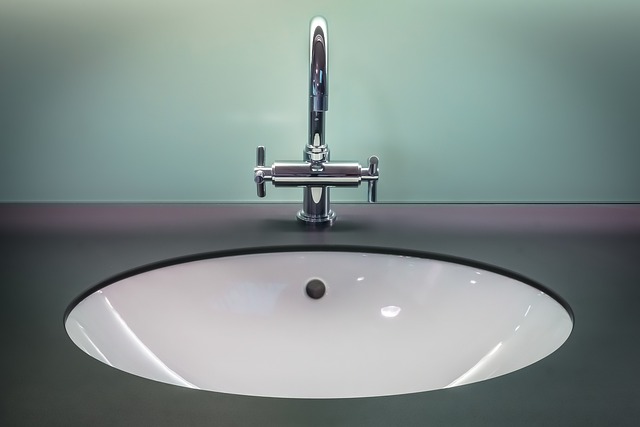Water-Efficient Fixtures and Their Impact on Utility Use
Water-efficient fixtures can change how households and buildings use utilities by reducing water consumption and associated energy for heating and treatment. This article examines how choices in fixtures, plumbing, materials, and room layout interact with lighting, ventilation, and other design factors to influence overall utility use and long-term sustainability.

Water-efficient fixtures are one component of a broader approach to reducing utility use in homes and commercial spaces. Installing lower-flow taps, efficient showerheads, and water-saving toilets can lower water demand, which also reduces the energy needed to heat and pump water. Beyond fixtures, choices about plumbing layout, materials, tiling, flooring, lighting, ventilation, storage, accessibility, waterproofing, ergonomics, and safety all contribute to measurable differences in utility consumption and maintenance needs. This article outlines how those elements interact and what to consider when planning upgrades or new installations.
How do fixtures and plumbing reduce water use?
Selecting water-efficient fixtures—faucets, showerheads, and toilets designed for reduced flow or dual-flush operation—directly cuts the volume of water used per activity. Fixtures with aerators or flow restrictors maintain perceived pressure while using less water. Plumbing design complements fixtures: shorter pipe runs and properly sized pipes reduce standby losses and the volume of water wasted while waiting for hot water. Routine maintenance of valves and fittings prevents leaks, which are a common invisible source of water waste and higher utility bills.
Can layout, ergonomics, and accessibility save water?
A well-considered layout reduces unnecessary water use by placing fixtures and plumbing close to hot water supplies and minimizing long runs that require flushing cold water before hot arrives. Ergonomics—easy-to-reach controls and user-friendly interfaces—encourage correct use of low-flow features. Accessibility improvements, such as lever handles and clearances for mobility aids, can make water-efficient fixtures more usable for all occupants, reducing the tendency to bypass efficient settings in favor of higher-flow alternatives.
Do materials, waterproofing, and tiling affect efficiency?
Materials and waterproofing are primarily associated with durability and maintenance but have indirect effects on utility use. High-quality tiles and effective waterproof membranes prevent moisture intrusion and the costly repairs that can follow, which might otherwise require additional water for cleanup or replacement processes. Porous materials that harbor mold or require frequent cleaning can increase water and chemical use. Choosing low-maintenance, water-resistant materials helps limit long-term utility and resource consumption.
How do lighting, ventilation, and safety impact utilities?
While lighting and ventilation are energy systems rather than water systems, they intersect with overall utility use. Efficient LED lighting and demand-controlled ventilation lower electricity consumption and can reduce the carbon footprint associated with heating water (if electricity is the heat source). Good ventilation preserves indoor air quality and prevents moisture buildup that can lead to deterioration of fixtures and finishes, which in turn reduces the need for resource-intensive repairs. Safety considerations—such as slip-resistant flooring and secure grab bars—can lower the risk of accidents that might otherwise prompt water- and energy-intensive remediation.
Does storage and hygiene influence water consumption?
Storage solutions that keep toiletries and cleaning supplies organized can reduce wasteful behaviors, like running water while searching for items. Hygiene practices and fixture design together influence water use: for instance, sensor-operated or metered taps can limit wash durations in shared facilities. Thoughtful storage that supports efficient cleaning routines can cut water and product usage. Additionally, selecting fixtures and surfaces that are easy to clean reduces the need for prolonged scrubbing or repeated rinsing, conserving both water and energy.
What role do sustainability and flooring choices play?
Sustainable flooring choices—such as low-VOC, water-resistant materials—can reduce the frequency of replacement and associated embodied energy costs. Flooring that resists water damage reduces the risk of leaks and the resultant need to dry or replace materials, which otherwise adds to utility use during repair. In a broader sustainability context, pairing water-efficient fixtures with renewable energy sources for water heating, and materials with longer service lives, yields more meaningful reductions in total utility consumption over a building’s lifecycle.
Conclusion
Choosing water-efficient fixtures is an important step toward lowering water and energy use, but impacts are maximized when fixtures are integrated with good plumbing design, appropriate materials, efficient lighting and ventilation, and user-centered layout and storage. Attention to waterproofing, ergonomics, accessibility, and safety reduces maintenance needs and extends service life, further limiting utility demand. A holistic approach that considers both immediate fixture performance and the surrounding design context produces the most reliable and sustainable reductions in utility use.




